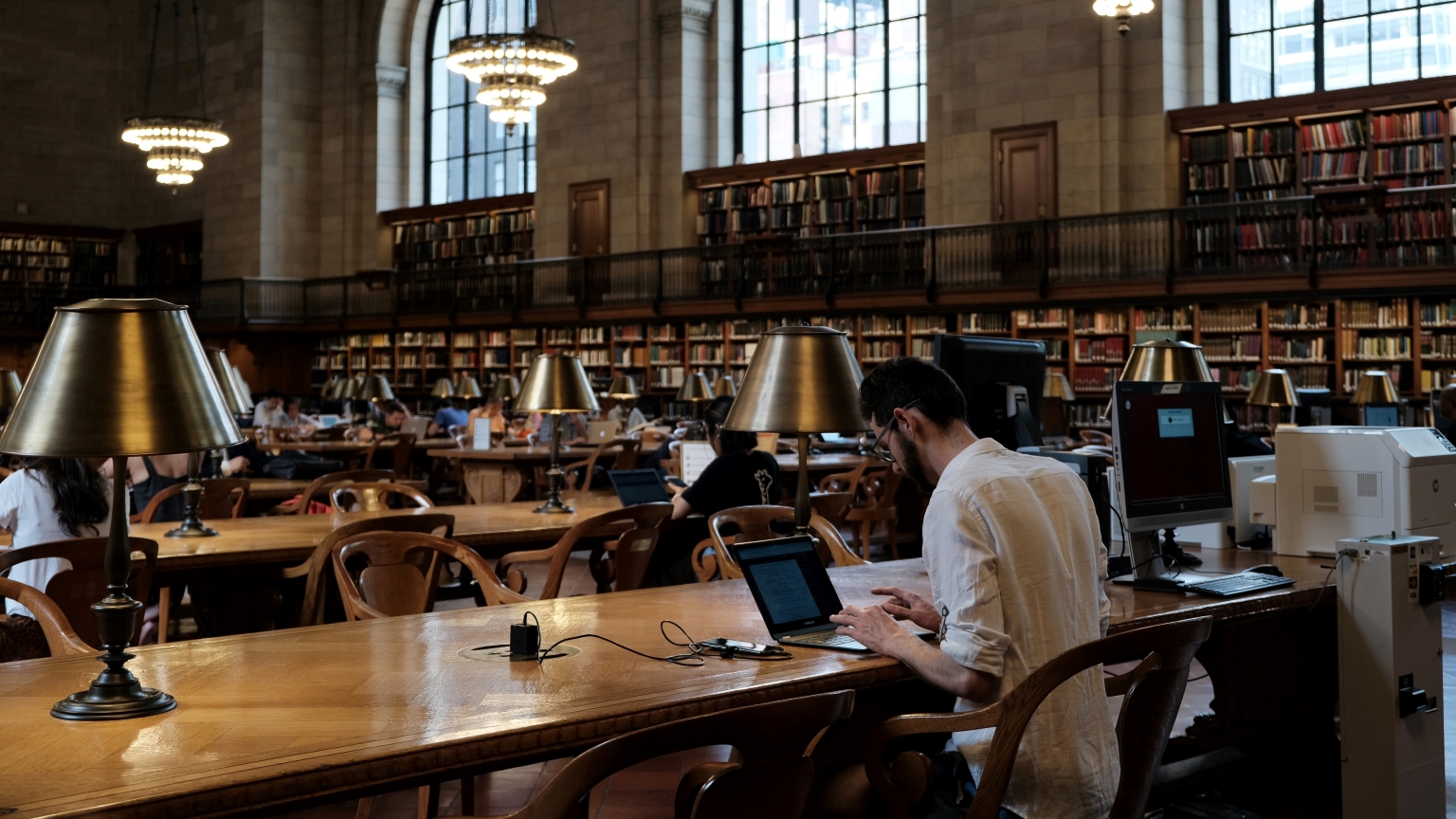Even in the digital age, libraries are an investment in children

- Many people would assume that as the digital age grows, library usage would shrink. But contrary to that, circulation of adult and children’s physical books grew in the 2000s, and public libraries remain a top cultural activity in the U.S.
- Public libraries are more than hubs of information. Many offer services ranging from job assistance and health insurance registration to kids’ read-alouds and even bike tune-ups. Libraries are also one of the few public spaces where people can freely access the internet.
- Researchers have found that investment in public libraries leads to community benefits.
A library is far more than a collection of books. Most importantly, libraries are hubs of information. They provide free access to copyrighted information like fiction stories, reference books, music, and movies. Many are a place to register to vote, find job assistance, sign up for health insurance, or even get a bike tune-up.
Economists at the University of Chicago attempted to quantify what a library does for a community. According to their research, it turns out that libraries prove to be a long-term investment in children.
In the digital age, libraries remain popular
A 2019 Gallup survey showed that America’s most common cultural activity is visiting the public library. Over half of Americans visit public libraries each year, checking out over two billion items. (I currently have 64 books checked out — moms of toddlers will understand this.) As of 2018, the U.S. had 9,261 library systems with 15,427 branches, incurring $12 billion dollars in operating costs.
In March 2020, when the pandemic reached a fever pitch and America saw widespread lockdowns, 99% of all public libraries closed. Up until that point, the demand for public library services was consistent — even in the digital age, when “just Google it” means that endless information is at our fingertips. Many people believed that libraries and the encyclopedias, books, and reference materials they housed would become obsolete. But to the contrary, researchers estimate that, in the 2000s, circulation of adult and children’s physical books grew by 4.5% and 8.2%, respectively, reports Brookings.
Hubs of information and more
In addition to their collections, libraries offer resources and educational programs. My local library offers weekly storytimes and sing-a-longs for kids, free lunches when school isn’t in session, technology courses, concerts, movie screenings, free bikes in the summer, and more. I have checked out a telescope and djembe drum. The library plant sale even supplied me with an overly productive tomato garden and three new trees.
And, since roughly one in five Americans do not have access to broadband internet at home or a smartphone, the library is their primary means for accessing the internet. “They serve as one of the few non-commercial indoor spaces available to the public,” the authors wrote.
The value of libraries
There is no doubt libraries do much for a community, but their impacts are largely unstudied — likely because it is difficult to separate the library’s effect on a community from the effects of other things like schools, community centers, or simply the prevalence of caring parents.
Still, a team of researchers from the Chicago Fed, Montana State University, and Miami University examined how financial investment in public libraries affects library operations, patron usage, and local communities, specifically student achievement, reports Market Watch. In their paper, they analyzed the effect of increases in capital spending on libraries. The team reported a 21% increase in library visits, a 21% increase in items checked out, and an 18% increase in children’s attendance at events.
Could it be that the “newness” of the library is responsible for this? Perhaps attendance would wear off with its novelty. But the study shows otherwise. “These increases in usage persist for at least 10 years after capital investment. Capital investment also increases library book holdings, employees, spending on salaries, and operating expenditures,” they wrote. “In other words, library capital investment increases both the quality and usage of libraries.”
In another study, Ezra Karger used census data to correlate the impact of grants from Andrew Carnegie to build public libraries on adult outcomes. He found that library construction grants increased children’s educational attainment as adults as well as their non-wage income (which was driven by occupational choice), though the effects were small. The aforementioned study from the Chicago Fed likewise found only a small improvement in reading test scores.





